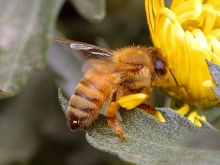
The author, Vivien Head, describes the honey (Apis mellifera mellifera) bee as one of the oldest forms of animal life still in existence from the Neolithic Age, with the oldest bee remains known to exist preserved in a tiny piece of amber believed to be over 80 million years old.
Man has thought to have interacted with the bee from evidence of a rock painting in Spain, thought to be around 6,000 to 8,000 years old. The Bible, ancient scrolls of the Orient, the Talmud, the Torah and the Koran all mention the honey bee and the healing food that it produces. Yet the threat on the survival of bees today has never been so prevalent.
Pests and diseases must be guarded against. The most extensive is the Varroa mite, which, because it has such a devastating effect on the economy of beekeeping, it has become known as the ‘Varroa Destructor’.
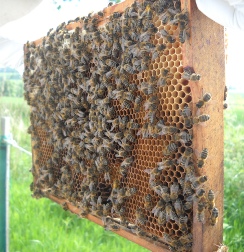
Varroa mites are small tick-like parasites that are native to Asia, using the Asian honey bee (Apis cerana) as their host. However, with the shipping of bees worldwide, there are only a few places left that do not have the mite. The Varroa mite is common in Scotland to the extent that honey bees may die out in this country without the care of the beekeeper. This emphasises the importance of the need for training new beekeepers.
The links below provide information about the types of plants that are good for pollinators:
RHS Perfect for Pollinators – Garden Plants
RHS Perfect for Pollinators – Wildflowers
Honeybee (Apis Mellifera) Life Cycle
The three types of honeybee:

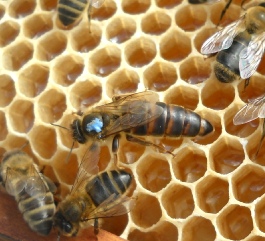
The Queen (left) is a female who can lay eggs (fertile). There is only one laying queen in a hive.
Drones are males. There may be several hundred in a hive. Their function is to fertilise the queen (so she is able to lay eggs).
Workers are females who cannot lay eggs (sterile). There may be 20,000 to 80,000 in a hive. They do all the work of building the combs, collecting and storing nectar and pollen, feeding the larvae and cleaning the hive.
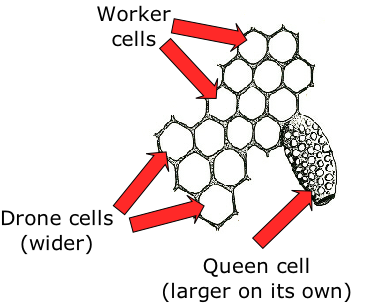
What do Workers do?
The workers build three types of wax cell, differing in size or shape. The queen lays eggs in each of the cells and the eggs hatch into larvae.
The workers feed the larvae until they are ready to pupate and then they put a wax capping over the cell.
After 10-11 days the capping is bitten off and the adult bee emerges

The eggs laid in the drone cells are unfertilised and develop into males.
The eggs laid in the worker cells and queen cells are fertilised but the queen larvae are fed a different diet from that of the larvae in the worker cells.
The difference in diet causes the workers to be sterile and the queen to be fertile.
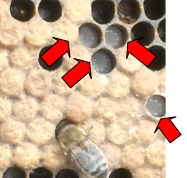
The image on the left shows the larvae in the cells. You can also see capped cells too.
For more information, visit www.biology-resources.com/bee-01.html
With thanks to DG MacKean and Ian Mackean
How do honey bees make honey?

Worker honeybees visit flowers to collect nectar which is a sweet juice from blossom. They suck it out with their tongues and then it is stored in a stomach called a honey stomach, not quite the same as a food stomach.
As soon as honey stomach is full, they will fly back to the hive to unload their contents, where the workers store it away.
Honey Bees Dancing
Honey bees communicate by dancing to indicate where the source of food is. There are two types of dances:
Round Dance – The Round Dance is used to indicate where the source of food is, e.g. nectar or pollen, which is less than 100 metres away.
Waggle Dance
For food that is more than 100 metres away, the Waggle Dance is used. This is where the bee moves in a figure of eight. She begins by running in a direction on the comb which is related to the position of the sun.
